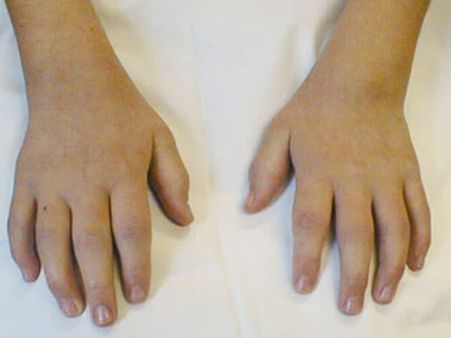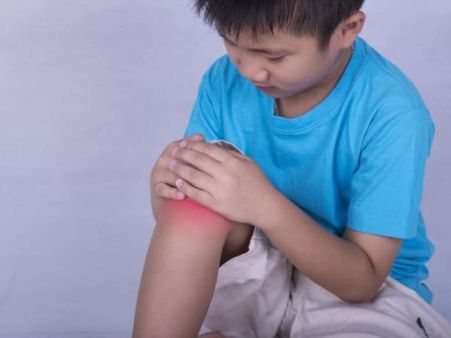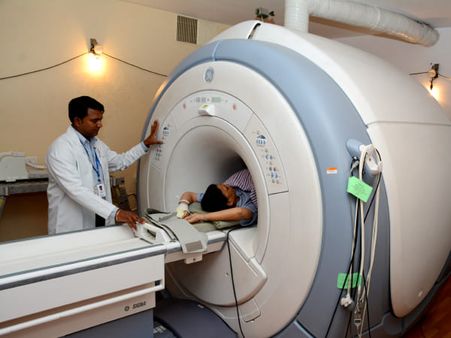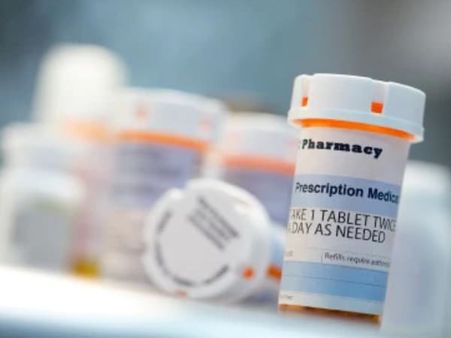Just In
- 9 hrs ago

- 10 hrs ago

- 13 hrs ago

- 14 hrs ago

Don't Miss
- Technology
 Apple Confirms Special Event for May 7: iPad Air, iPad Pro 2024 Models Expected
Apple Confirms Special Event for May 7: iPad Air, iPad Pro 2024 Models Expected - Finance
 TCS Vs Infosys Vs Wipro Shares, ADRs, Upcoming Dividends: Which Mega IT Stocks To Buy After Q4 Results?
TCS Vs Infosys Vs Wipro Shares, ADRs, Upcoming Dividends: Which Mega IT Stocks To Buy After Q4 Results? - Sports
 Who Won Yesterday's IPL Match 39? CSK vs LSG, IPL 2024 on April 23: Marcus Stoinis Fires 63-ball 124 To Quiet Chepauk
Who Won Yesterday's IPL Match 39? CSK vs LSG, IPL 2024 on April 23: Marcus Stoinis Fires 63-ball 124 To Quiet Chepauk - News
 Senator Lambie Calls For Elon Musk's Imprisonment Over Wakeley Church Stabbing Posts
Senator Lambie Calls For Elon Musk's Imprisonment Over Wakeley Church Stabbing Posts - Movies
 Mirzapur 3 OTT Release Date, Platform: When Will Mirzapur Season 3 Premiere On Amazon Prime Video?
Mirzapur 3 OTT Release Date, Platform: When Will Mirzapur Season 3 Premiere On Amazon Prime Video? - Education
 Telangana Inter Manabadi 1st and 2nd Year Results 2024 to be Declared Tomorrow
Telangana Inter Manabadi 1st and 2nd Year Results 2024 to be Declared Tomorrow - Automobiles
 Chrysler Pacifica Marks Seven Years As Most Awarded Minivan With New Campaign
Chrysler Pacifica Marks Seven Years As Most Awarded Minivan With New Campaign - Travel
Kurnool's Hidden Gems: A Guide To Exploring India's Lesser-Known Treasures
Juvenile Rheumatoid (Idiopathic) Arthritis: Causes, Symptoms, Diagnosis And Treatment
July is Juvenile Arthritis Awareness Month, and this month aims to create awareness about the early symptoms of juvenile arthritis and to improve the quality of life of children through effective treatment methods.
Juvenile idiopathic arthritis (JIA), previously known as juvenile rheumatoid arthritis (JRA) is the most common type of juvenile arthritis. Juvenile idiopathic arthritis is a chronic rheumatic disease that affects children aged 16 or younger, which persists for six weeks or longer. The prevalence rate of juvenile idiopathic arthritis differs from region to region [1].

What Causes Juvenile Idiopathic Arthritis?
Juvenile idiopathic arthritis occurs when the body's immune system, which normally fights germs, mistakenly attacks its own healthy cells and tissues. This results in inflammation in the joint marked by pain, swelling, tenderness and redness.
The exact cause of JIA is not clear. However, researchers suspect that this abnormal immune response could be due to genetic and environmental factors [2].

Types Of Juvenile Idiopathic Arthritis
• Oligoarthritis - It is most common among female children who are below six years. Oligoarthritis affects four or fewer joints, especially in the knee or ankle.
• Polyarticular arthritis - It affects five or more joints during the first six months.
• Systemic arthritis - It affects the whole body.
• Enthesitis-related arthritis - It usually affects males who are above six years.
• Juvenile psoriatic arthritis - Children with this type of arthritis experience psoriatic rash on the scalp, knees, elbows and behind the ears.
• Undifferentiated arthritis - This type of JIA doesn't fit in any of the above types or fits in more than one type [3].
Image source:mytips10.blogspot.com


Symptoms Of Juvenile Idiopathic Arthritis
•
Red
or
swollen
joints.
•
Joint
pain
[4]
•
Stiffness.
•
Difficulty
in
moving.
•
Fever.
•
Swollen
lymph
nodes.
•
Skin
rash
in
the
affected
area.

Complications Of Juvenile Idiopathic Arthritis
•
Two
legs
are
of
unequal
lengths
[5].
•
Joint
contracture
•
Slow
growth.
•
Low
bone
mineral
density.
•
Macrophage
activation
syndrome
[6].


How Common Is Juvenile Idiopathic Arthritis In Children?
All the types of JIA occur mostly in females. Only enthesitis-related arthritis affects males and systemic arthritis affects both males and females [7].
When To See A Doctor
Consult a doctor if your child experiences any of the above-mentioned symptoms for more than a week.

Diagnosis Of Juvenile Idiopathic Arthritis
First, a complete physical examination is done and then the doctor asks about the symptoms and medical history. After which, a number of diagnostic tests are done, which includes laboratory tests (CBC, ESR, CRP, ANA, RF, anti-cyclic citrullinated peptide antibodies (anti-CCP), HLA-B27) and imaging tests (ultrasound and MRI) [8].


Treatment Of Juvenile Idiopathic Arthritis
JIA can't be cured, but with early diagnosis and faster treatment, the disease can be managed.
• Medications - Nonsteroidal anti-inflammatory drugs (NSAIDs) such as ibuprofen, indomethacin, tolmetin and naproxen are used for treating children under 12 years. It lowers pain and inflammation and the drugs show the effect within one to three days. The drugs can cause side effects like stomach pain and headache.
Corticosteroids reduce inflammation and the general dose is up to 1 mg per day.
Other anti-rheumatic drugs such as methotrexate, sulphasalazine and DMARDs can help treat JIA. Biological treatment is also used in the treatment of JIA [9].
• Physical therapy - A physical therapist will teach strengthening and flexibility exercises of the joints, help improve balance and coordination, and show how to use assistive devices.
• Lifestyle changes - These include exercising regularly, eating nutritious foods and meditation to manage the stress and pain of JIA.
Image source: www.naturalathleteclinic.com
Common FAQs
Q. Is juvenile arthritis serious?
A.
Yes,
it
is
a
serious
chronic
disease.
Q.
What
age
does
juvenile
arthritis
start?
A. Children can get JIA at 16 years or younger.
Q. Can juvenile rheumatoid arthritis go away?
A. The symptoms of JIA can go away with proper treatment, which is known as remission.
Q. How long does juvenile rheumatoid arthritis last?
A. It can last for months or years.
-
 pregnancy parentingWhite Lung Syndrome: What Are The Symptoms Of The Disease Rampant In China? How Does It Spread?
pregnancy parentingWhite Lung Syndrome: What Are The Symptoms Of The Disease Rampant In China? How Does It Spread? -
 healthWorld HIV/AIDS Day: What Is The Difference Between HIV and AIDS?
healthWorld HIV/AIDS Day: What Is The Difference Between HIV and AIDS? -
 healthDengue 101: Causes, Symptoms, Risks, Complications, Treatment, Prevention, Diet And More
healthDengue 101: Causes, Symptoms, Risks, Complications, Treatment, Prevention, Diet And More -
 healthDiarrhoea 101: Causes, Symptoms, Risks, Complications, Treatment, Prevention, Diet And More
healthDiarrhoea 101: Causes, Symptoms, Risks, Complications, Treatment, Prevention, Diet And More -
 health'Epileptic Nightmare' of Neurocysticercosis: The Hidden Epidemic of Parasites Causing Epilepsy
health'Epileptic Nightmare' of Neurocysticercosis: The Hidden Epidemic of Parasites Causing Epilepsy -
 pregnancy parentingLife-Threatening Risk During Pregnancy: Sepsis Can Harm Both Mother and Baby
pregnancy parentingLife-Threatening Risk During Pregnancy: Sepsis Can Harm Both Mother and Baby -
 healthStay Informed: The Hidden Dangers of Legionnaires' Disease and How to Prevent It
healthStay Informed: The Hidden Dangers of Legionnaires' Disease and How to Prevent It -
 healthMyths vs Facts: Can A Single Mosquito Bite Really Give You Dengue?
healthMyths vs Facts: Can A Single Mosquito Bite Really Give You Dengue? -
 healthTop 5 Reasons For Vaginal Rash: When You Should See A Doctor
healthTop 5 Reasons For Vaginal Rash: When You Should See A Doctor -
 healthCan Inhaling Menthol Help Improve Memory For Alzheimer's Disease?
healthCan Inhaling Menthol Help Improve Memory For Alzheimer's Disease? -
 healthWorld Vitiligo Day 2023: Are You At Risk Of Developing Vitiligo?
healthWorld Vitiligo Day 2023: Are You At Risk Of Developing Vitiligo? -
 beautyFather's Day 2023: Stretch Marks In Men, Causes And Treatments
beautyFather's Day 2023: Stretch Marks In Men, Causes And Treatments


 Click it and Unblock the Notifications
Click it and Unblock the Notifications



